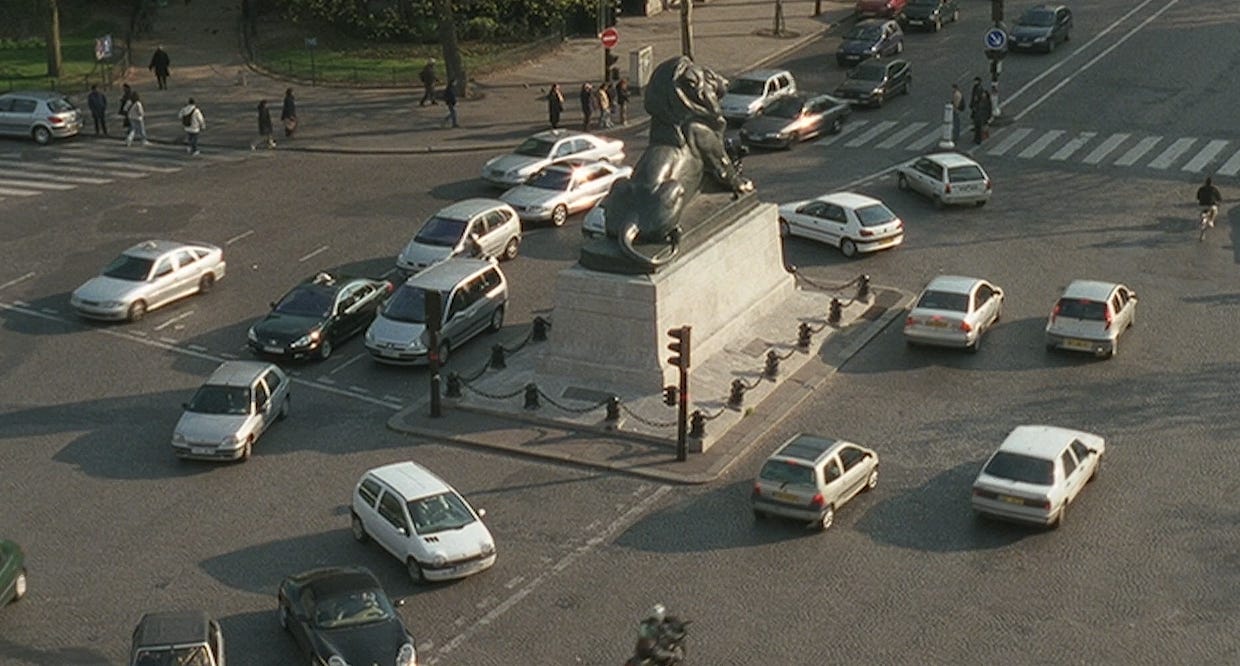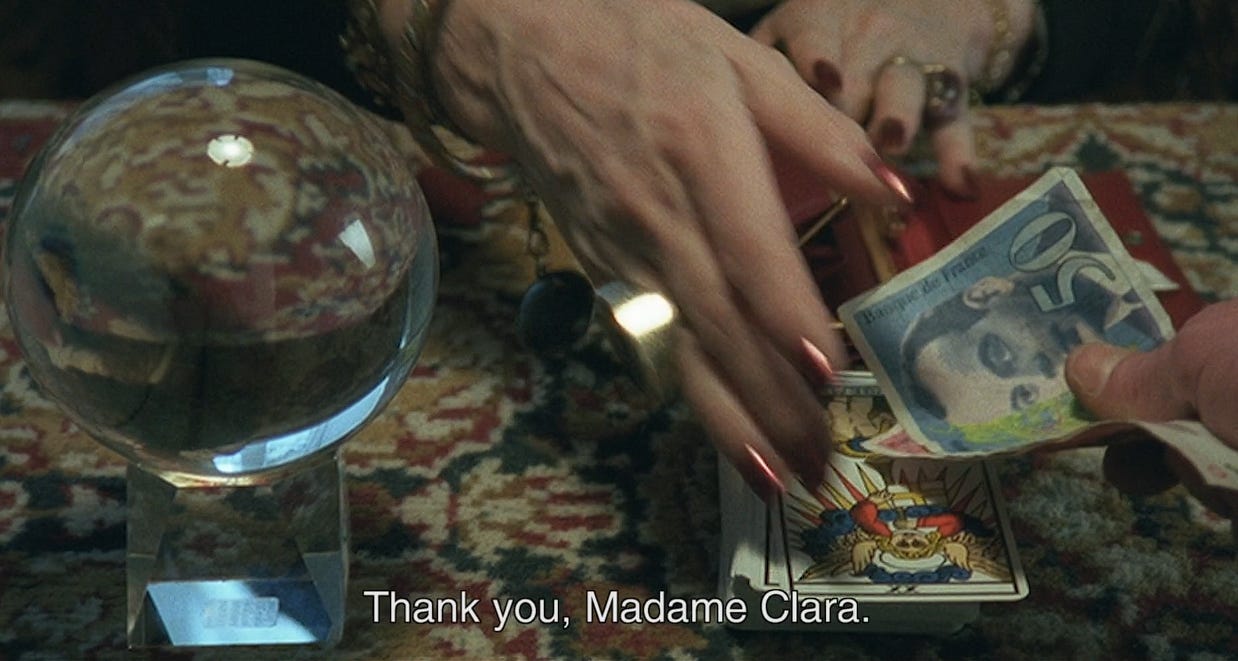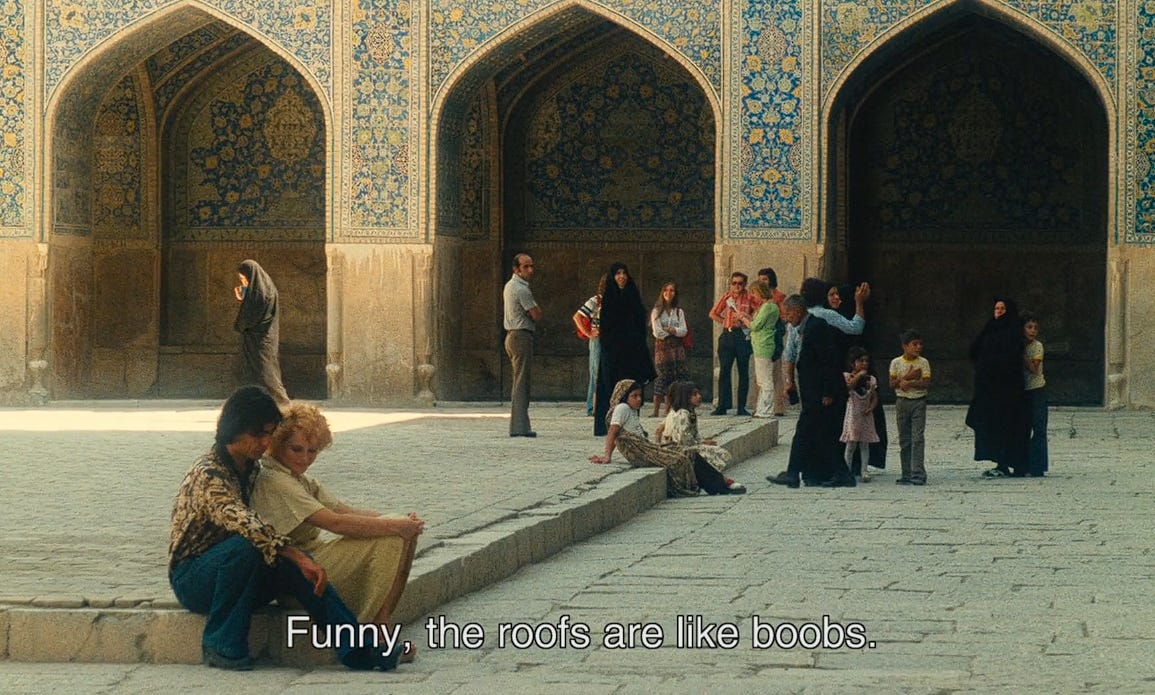An Experiment of Auteurship: Agnès Varda
An On-Going Critical Visual Critique of Agnès Varda's Auteurship
This essay is an experiment of the auteur. Agnès Varda has been given this title or classification, especially by those in film spaces. Her sense of space, rather than spoken explicit explanation or dialogue is what separates her from mainstream film. To understand this I took took shorts, from two different periods in her career. These two films even though vastly different by time period, genre, and purpose, still mark her stamp in the same way a vastly similar piece would.
FILM 1
Film: Le lion volatil (2003)
Subject: A Rom-Com/Documentary of a disjointed couple.
Below are classifications of stylistic patterns within Agnès Varda’s work. She is know for very similar shots and aesthetic styling of the composure of each shot. She often presents people with close-ups which you can usually see visually, a type of texture, whether their skin, the cloth around the head, or otherwise. Varda utilizes two body features quite heavily, these being the eyes, and the hands.
A Varda Close-Up
Sequence & Space
Repeating Icons
Imperfect Shot Balance
Hands
Fortune Tellers & Cards
The hands represent so much to humans. Hands are a means of communication, transaction, mobility, expression, language, and understanding. Close-ups of hands are typically shown in action to show a visible motion from the mobile hand, but also the visual aesthetics of the hands as the present representative of the person’s body. The viewer may hear the characters talking, but Varda chooses to capture the hands to visually show the subtext of how humans communicate. A slight turn of the hand to communicate confusion, or a resending hand to show disgust. Hands show what the face will hide, and what words will never tell.
Sequence within the space or around a subject or object. This stylistic choice is interesting because Varda simply stalks the subject of her gaze. From in-front, behind, the side, the sky, and hiding behind walls, she watches her subject to keep an alert-observant eye. All the shots linked together show a sequence of movement from the viewer’s perspective, but a static reference point. This goes hand in hand with repetition of very specific objects. The object repeating being the statue of the lion upon the pedestal. This monument is the glue which holds the film together in a sense. This district in Paris is similar to a clock as the boy works on one side, the girl on another, and their relationship exists within a small city monument’s district. When the monument disappears, the girl’s psyche reciprocates this similarity as she has lost the boy she likes with her less than successful career. This drastic shift shows the relationship of the monument representing a testament to the couple’s relationship.
Regarding the balance of a shot, Varda never seems to make it too textbook perfect. She orchestrates a shot of balance somewhat similar to mainstream film, but it is always slightly off or disjointed. In the park, the scenes which are filmed sat, don’t quite center the subject, rather center their bodies. In mainstream film typically the talking heads of the subjects are centered vertically and horizontally, not the body. This choice eludes me, but it simply adds to her style because she is not shooting a templated mainstream film. This begs the conversation of why we have taught rules of balancing when it may serve to one’s style, to be unbalanced. Why should we conform? Varda is shooting people, and people would not wait until ‘the camera’ is exactly centered to start a conversation.
FILM 2
Film: Plaisir d’amour en Iran (1977)
Subject: Exploring Isfahan, Iran.
This film explores landscapes and space in a grandeur scale. A camera which captures the breathing and living spaces of the city, Isfahan, Iran. Specifically Varda chooses to focus on the grand length of the buildings she views. The larger-than-life height of arches and architectural ceilings. The beauty in the geometry and geometric patterns which adorn these beautiful marvels. The dialogue is situated around the beauty in love itself, through lovers. The quaintness of a coy interaction imposed with the visual beauty of patterns. The viewer hears this conversation which feels odd at first, but the mystical, almost divine beauty of the ceiling’s geometric designs seems to fit this vast subject of human love.
Sequence & Space
Imperfect Shot Balance
Hands
A Varda Close-Up
Repeating Icons
Varda accomplishes a few feats in her style. First, she reaffirms her beliefs of space. The sequencing from tall arch, to tall arch repeats. The shot of beautiful patterns leads to another shot of the same devices. Varda sees the breathing-living beauty within silence and space. This time, the film resides in this city, but the subject being the city grants Varda the subject itself. The subject is so vast therefore she, and the viewer become the witness of the subject around her rather than observing one singular piece of matter in front of her.
Of course Varda shoots the people within this film adjacent or de-centralized. The imperfect balance of her shots give way to depth, size, space, grandeur, other people, witnesses, location, and establishment of scene. Just as the first film, Varda utilizes 1/3 of her shot for the specific character, and 2/3 for the space.
As the arches repeat, this also further establishes Varda’s early love of repetition and pattern. The arches and patterns repeat almost accidental, just out of their nature of being. I believed the arches deserved a separate label of repeating icons because they are the holders or witness of the space. The arches tower over the people, the light, the shadows, and general space of the shot. The arches almost seem life-like or personified by Varda. The arches act as a personification of guardianship in the plaza.
Of course, hands. At least one shot is of the hands as a device of poetry, a synthesizing act of love and human expression. Even though this one shot is slim in the grand-analysis, Varda still chose to shoot the hands and not the body or the face. Varda chose the device which humans express themselves from, the mechanical devices which humans use to present their deepest thoughts and desires.
Varda is certainly an auteur, and by any means a artist of rooted beliefs of basic filmographic techniques. Varda employs many repetitious patterns. She loves close-ups, and shots of hands to show the visual cues of human nature. Varda loves establishing space through the usage of sequence. She also loves establishing her beliefs on the spaces she films through irregular and imperfect balance in her shots to show more than what is typical centralized. Varda centralizes the locale, and the space, rather than obvious persons. Through this analysis of various purpose, time, and aesthetics I can thoroughly say Varda is indeed an artist of firmly held beliefs which transcend her films. The argument against such a claim can’t be held liable when the evidence for her auteurism is so great. Varda encompasses distinct patterns, and what is auteurship, but firmly held patterns.























